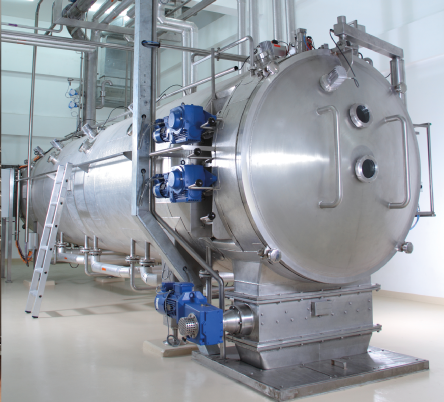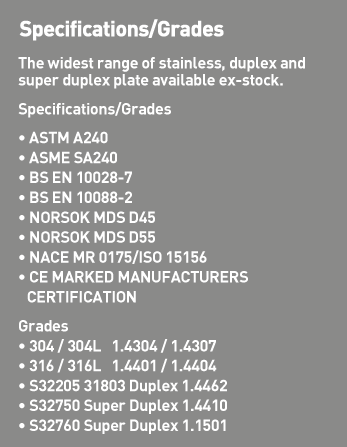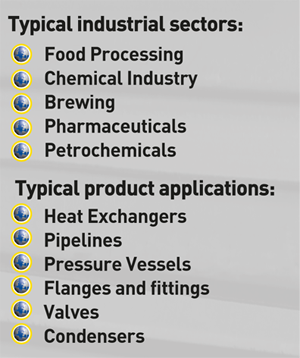


These types of steel are some of the most regularly specified and have come to represent the embodiment of the basic stainless product. They are part of the 300 Series of steels (as defined in SAE specifications) which covers a range of austenitic chromium-nickel alloys. They are also known as 18/8 stainless due to their chemical composition which includes approximately 18% chromium and 8% nickel by weight. The steels are easy to form, weld, and fabricate and their resistance to corrosion from, amongst other things, acids naturally contained in food has resulted in them being used widely in the food and drink processing industries.
Type 304 and Type 304L have very similar chemical and mechanical properties and are often included on a single material test certificate when the actual properties of a stainless steel plate meet the criteria of both types. This is a very common occurrence. Type 304L is a variation of Type 304 and has a lower carbon content which improves weldability and lowers the risk of reduced corrosion resistance around the weld. Type 304L also has a slightly lower yield and tensile strength than Type 304.